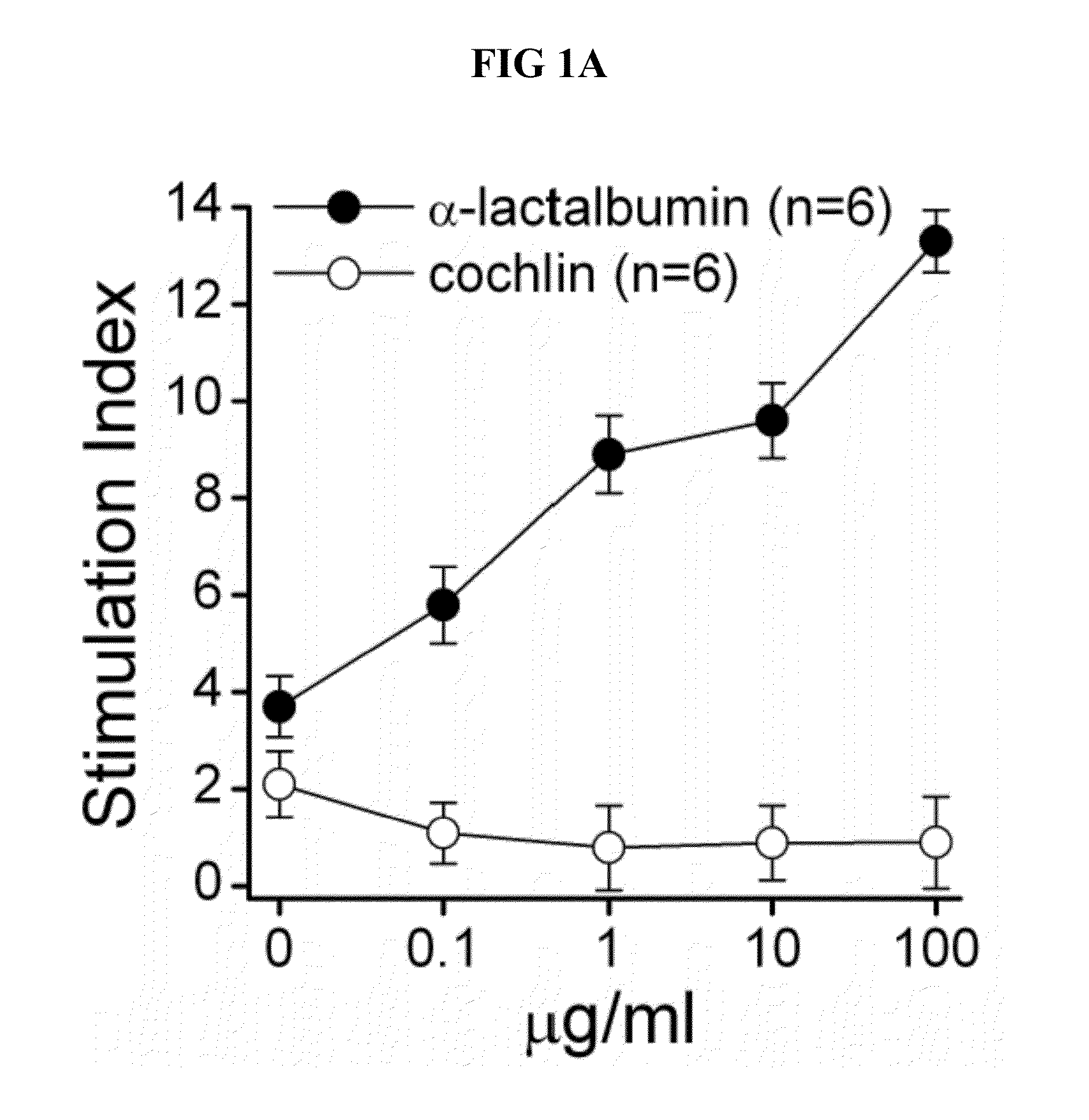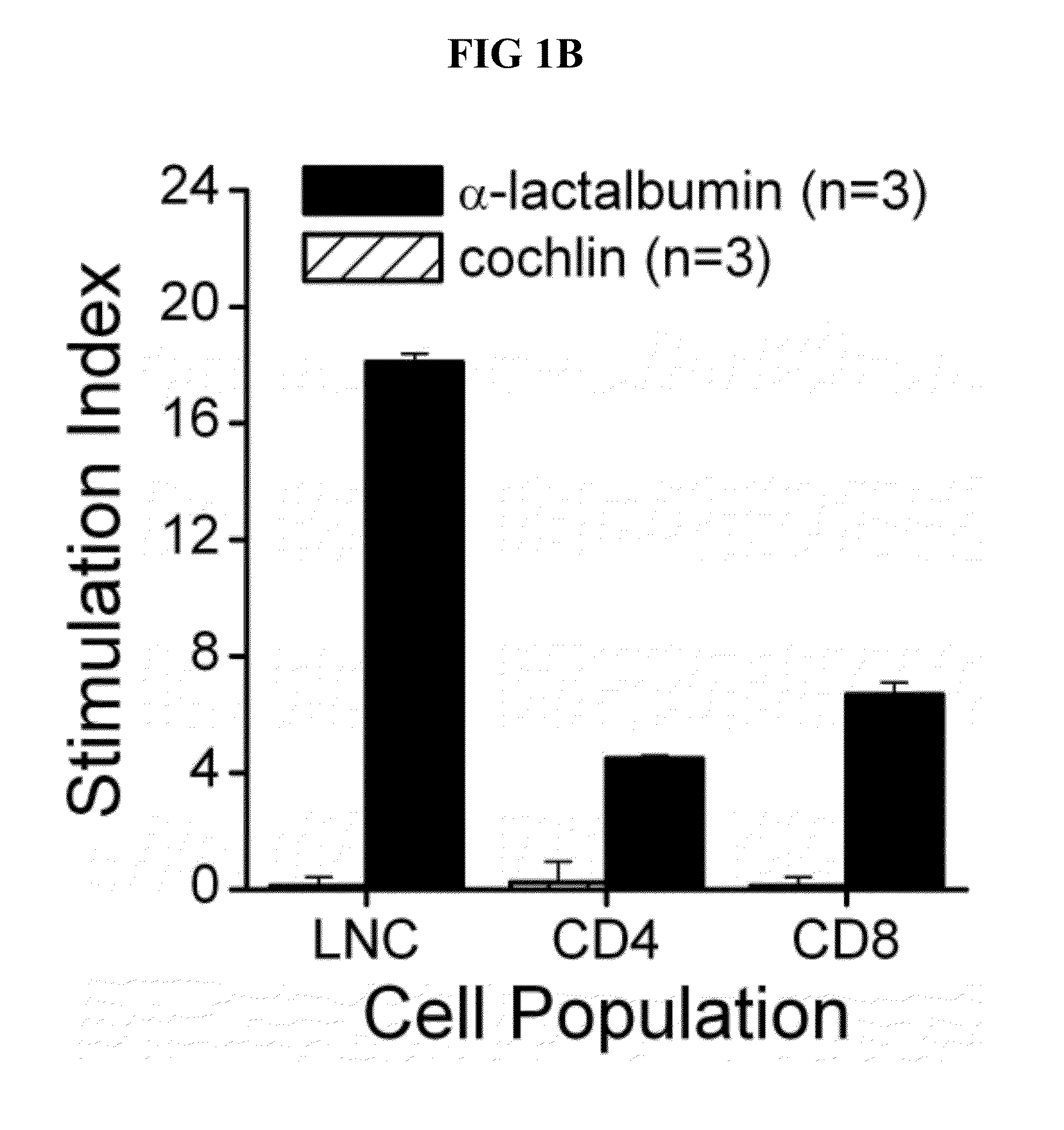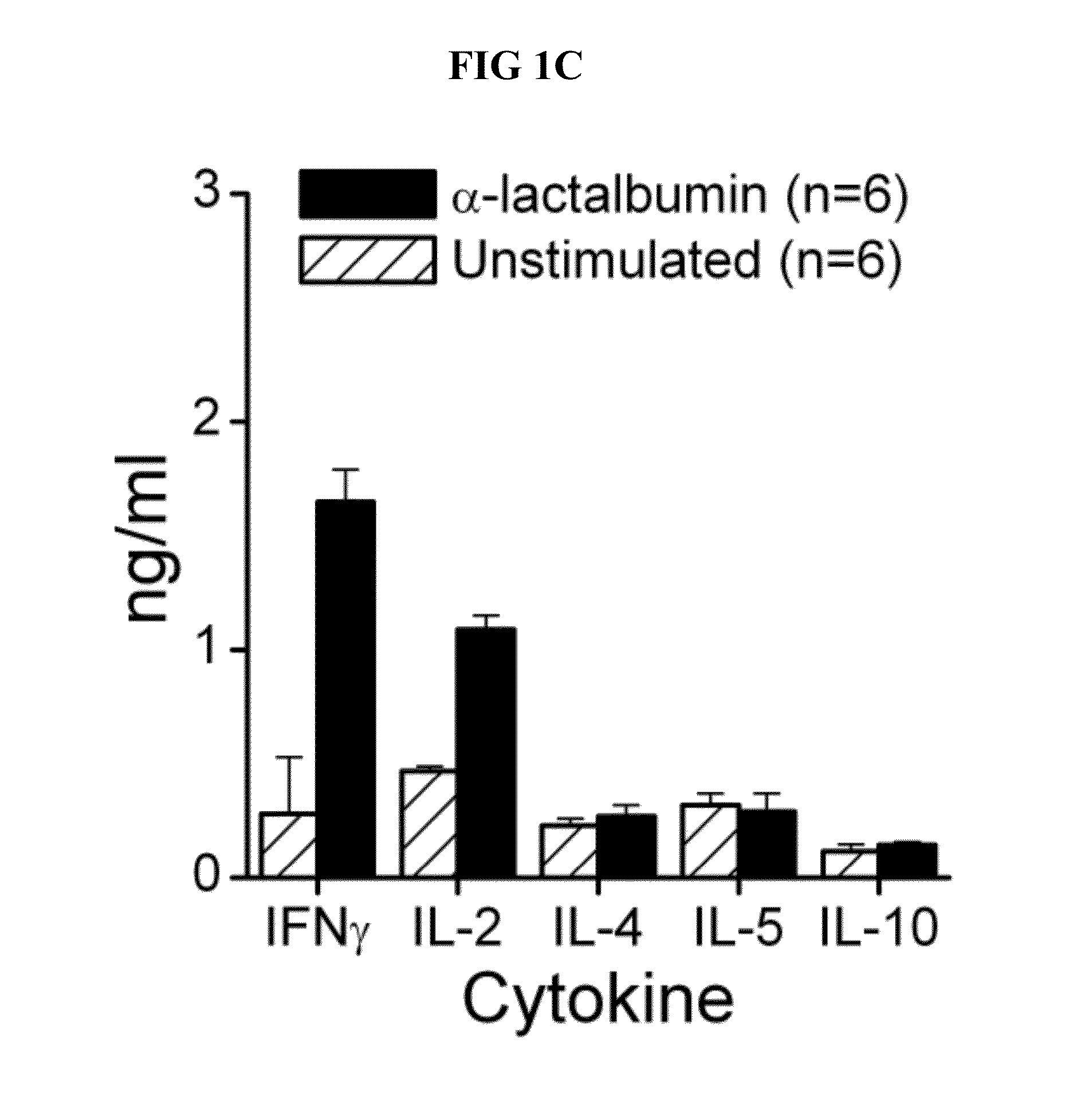Breast Cancer Vaccine
a breast cancer and vaccine technology, applied in the field of breast cancer vaccines, can solve the problems of breast cancer not being developed as an integral part of the standard of care, substantial systemic autoimmune sequelae, and long-term optimal tumor-specific antigens, and achieve safe and effective protection against the development of breast cancer, and induce an effective proinflammatory immune response.
- Summary
- Abstract
- Description
- Claims
- Application Information
AI Technical Summary
Benefits of technology
Problems solved by technology
Method used
Image
Examples
example 1
α-Lactalbumin Immunization Activates both CD4+ and CD8+Proinflammatory T Cells
[0038]Recombinant mouse α-lactalbumin is purified under denaturing conditions using nickel-nitrilotriacetic acid affinity chromatography followed by reverse phase HPLC. Female SWXJ mice are immunized with recombinant mouse α-lactalbumin. Ten days after immunization, lymph node cells (LNC) in the mice show a dose-dependent proliferation in recall responses to α-lactalbumin and are unresponsive to recombinant human cochlin generated in E. coli in a virtually identical manner (see FIG. 1A). Both CD4+ and CD8+ T cells are involved in responsiveness to α-lactalbumin (see FIG. 1B). Furthermore, α-lactalbumin shows a proinflammatory phenotype involving a high production of interferon-gamma (IFNγ) and IL-2 and a low production of IL-4, IL-5, and IL-10 (see FIG. 1C).
example 2
Immunization of Non-Lactating Mice with α-Lactalbumin Fails to Induce Breast Inflammation
[0039]Breast tissue from non-lactating mice immunized with α-lactalbumin does not demonstrate inflammatory infiltration, but instead consistently shows isolated individual CD3+ T cells migrating through breast parenchyma. However, extensive T cell infiltrates consistently occur throughout the mammary tissue of lactating mice immunized with α-lactalbumin. Breast tissue from lactating control mice immunized with CFA alone does not show inflammatory T cell infiltration. Analysis of breast infiltrating T cells by flow cytometry shows a high frequency of CD3+CD4+ T cells and CD3+CD8+ T cells expressing the CD44high activation marker. Analysis by quantitative real-time RT-PCR shows that breast tissue from lactating mice immunized with α-lactalbumin have significantly elevated expression levels of IFNγ (p=0.001) but not IL-10 (p>0.10) compared to levels expressed in breast tissue from untreated normal ...
example 3
Prophylactic α-Lactalbumin Vaccination Inhibits Growth of Breast Tumors
[0040]MMTV-neu mice express the unactivated neu (ErbB2 or HER2 / neu) protooncogene under the regulation of the long terminal repeat of mouse mammary tumor virus (MMTV) and show a 50% incidence of spontaneous mammary tumors by 205 days of age. Eight week old MMTV-neu mice are immunized with either α-lactalbumin in CFA or with CFA alone. All mice are euthanized when the first tumor reached 17 mm in diameter (at around 10 months of age). Upon completion of the experiment, all CFA-immunized control mice develop breast tumors upon. In comparison, none of the mice immunized with α-lactalbumin show any detectable mammary tumors (p=0.0004; see FIG. 3A).
[0041]Prophylactic vaccination with α-lactalbumin is also effective against transplantable 4T1 tumors. BALB / c mice immunized with α-lactalbumin 13 days prior to inoculation with 4T1 tumor cells exhibit significant growth inhibition (p=0.0006; see FIG. 3B).
PUM
| Property | Measurement | Unit |
|---|---|---|
| diameter | aaaaa | aaaaa |
| physical examination | aaaaa | aaaaa |
| physical | aaaaa | aaaaa |
Abstract
Description
Claims
Application Information
 Login to View More
Login to View More - R&D
- Intellectual Property
- Life Sciences
- Materials
- Tech Scout
- Unparalleled Data Quality
- Higher Quality Content
- 60% Fewer Hallucinations
Browse by: Latest US Patents, China's latest patents, Technical Efficacy Thesaurus, Application Domain, Technology Topic, Popular Technical Reports.
© 2025 PatSnap. All rights reserved.Legal|Privacy policy|Modern Slavery Act Transparency Statement|Sitemap|About US| Contact US: help@patsnap.com



